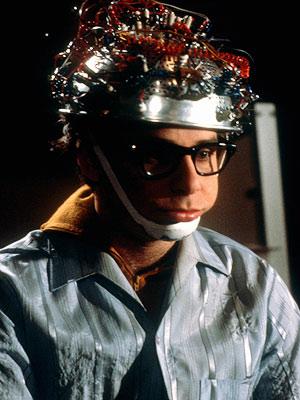Thanks to the hard work and serendipity of Dr. Michael Gazzaniga, who was recently profiled in the New York Times, we know that our left brain homunculus is a storyteller. Our homunculi confabulate like crazy. Nevermind that the person in our head lacks basic information or essential plot elements: s/he will fashion a narrative or plausible sounding explanation regardless.
But our homunculi are not just liars and confabulators. They are also credulous and can easily be fooled into believing they intended to do something when they had no such intention. The setup for this experimental finding was surprisingly simple.
Test subjects sat in front of a computer screen. They thought they were connected to the computer through a phony brain-computer interface, which may have looked like this:

Under conditions of frequent line movement, participants reported more intentions to move lines. Under conditions of little movement, participants reported fewer intentions. Because subjects had absolutely no control over line movement, the results suggest we can be fooled into believing we intended something we didn’t.
While credulity may know some bounds, the bounds seem to be fairly elastic and easily manipulated.
Reference:
Lynn, M., Berger, C., Riddle, T., & Morsella, E. (2010). Mind control? Creating illusory intentions through a phony brain–computer interface Consciousness and Cognition, 19 (4), 1007-1012 DOI: 10.1016/j.concog.2010.05.007



